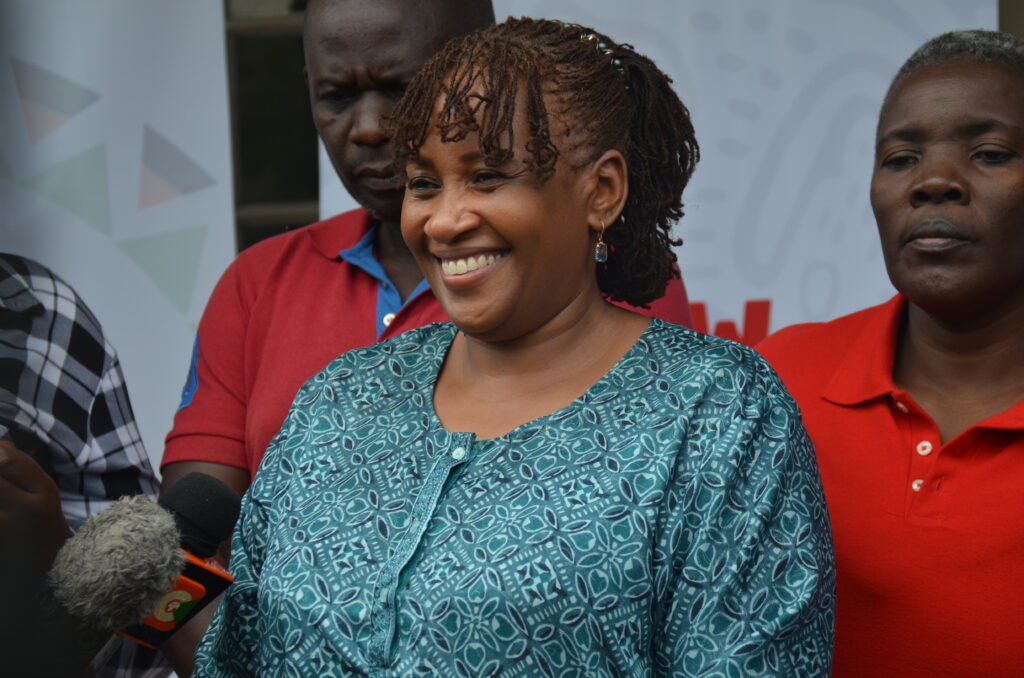
By The Peak
The National Syndemic Diseases Control Council (NSDCC) has called on all communities in the Country to actively participate in the fight against HIV/AIDS especially in combating new infections as well as stigmatisation. Addressing journalists in Meru town where the national commemoration of this year’s World AIDS Day will take place (Friday, December 1), NSDCC Chief Executive Officer Ms. Ruth Laibon-Masha said communities should by now be aware that stigmatisation of the infected persons was bad as well as fighting other cultural ways that might result to new infections. “The 2023 World AIDS Day theme, ‘Let Communities Lead’, highlights the importance of community-led responses working alongside other public health systems in addressing HIV-related stigma, discrimination, and providing HIV prevention education and interventions to support treatment adherence,” said Ms Masha. She added that there was a great need for all the stakeholders to invest in communities in order to ensure these issues are addressed directly from the grassroots level. “In this regard, every sector should communicate to those it serves about their specific roles in addressing this menace. Kenya is seventh globally in terms of people living with HIV and this means that despite the efforts we are putting in, stigma still stands in our way,” said Ms Masha. She added that Kenyan men should also be engaged in the conversation considering that some were the sources of infections the newborns and breastfeeding children. “When a man goes out there and engages in unprotected sex with a sick woman, then he transfers the virus to her breastfeeding wife who in turn infects the child. It is high time that society understand that it is not only the mother who can contribute to mother-child transmission but also the father,” said Ms Masha. She added that Kenya has made tremendous progress in combating its substantial HIV epidemic, doubling the number of people on lifelong antiretroviral treatment from 656, 369 in 2013 to 1,294,339 in 2023. However, she added, despite these achievements, the country grapples with the challenge of new HIV infections among children, adolescents, and young people with reports of an estimated 62 new infections per week among adolescents aged 10-19. The country fell short of achieving the target to reduce mother-to-child HIV transmission rates to less than 5 percent by 2020, recording a transmission rate of 8.6 percent in 2022. In Meru County, with a population of approximately 1,775,511 in 2022, the HIV situation is a significant concern. As of 2023, there are 30,912 individuals living with HIV, with 29,433 adults (15 years and above) and 1,479 children (0-14 years). The HIV prevalence rate in the county is 2.4 percent, with a higher prevalence rate among females (3.7 percent) compared to males (1.3 percent). In 2020, there were 543 new HIV infections, with 443 occurring in adults and 100 in children. The ‘Triple Threat’ in Meru County refers to the interconnected challenges of new HIV infections, teenage pregnancies, and sexual and gender-based violence among adolescents and young women aged 10 to 19 years. Adolescents aged 10-19 years account for 62 percent of new weekly HIV infections, and they make up 18 percent of all antenatal care attendances. In terms of gender-based violence cases, adolescents aged 10-19 contribute 33 percent of reported cases in the county. Ms Masha said the NSDCC is fully committed to addressing the Triple Threat in Meru County through collaborations with local authorities, healthcare professionals, and communities to implement evidence-based interventions and policies that prioritize the health, safety, and empowerment of adolescents and young adults. “With collective efforts and support from all the stakeholders, we aim to successfully combat the Triple Threat and create a brighter future for Meru County,” said Ms Masha.






